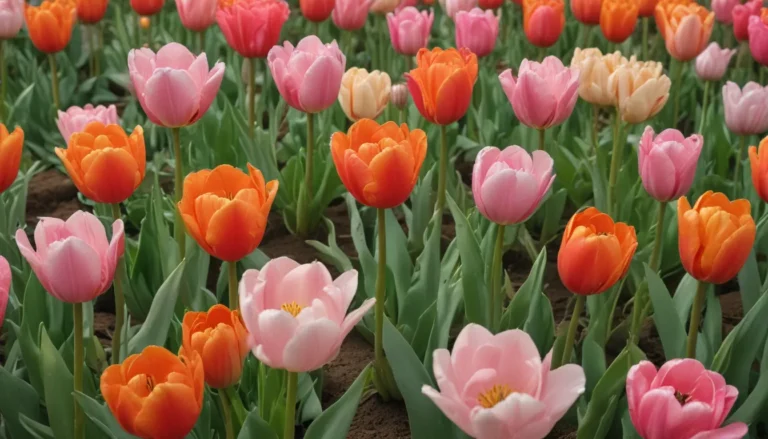The Ultimate Guide to Growing and Caring for Queen Anne’s Lace

An Introduction to Queen Anne’s Lace
Queen Anne’s lace, also known as Daucus carota, is a stunning wildflower that adorns fields and ditches with delicate white frills and a distinctive purple center flower. Its beauty and charm have made it a favorite among many, including myself. However, there’s so much more to this plant than just its looks.
In this comprehensive guide, we’ll delve into the fascinating world of Queen Anne’s lace and explore everything you need to know about cultivating and caring for these lovely blooms.
Understanding the Cultivation and History of Queen Anne’s Lace
Daucus carota belongs to the Apiaceae family and is native to Europe, Asia, and North Africa. Introduced to North America by the early colonists, this plant has naturalized in various regions, including North America, Japan, New Zealand, and Australia.
The name “Queen Anne’s lace” is said to have originated from its resemblance to the lace headdress of Queen Anne of Denmark, who challenged her ladies-in-waiting to create lace as beautiful as a flower – none could match her skill. Another story suggests that the purple flower at the center symbolizes a drop of blood from when Queen Anne pricked herself while sewing.
Propagation Tips for Queen Anne’s Lace
One of the fascinating aspects of Queen Anne’s lace is its self-propagation through seeds. With each umbel containing up to 1000 flowers, this plant spreads easily through its bristled seeds that latch onto fur and feathers for dispersal.
To propagate Queen Anne’s lace, direct seeding is the best method due to its long taproot, which makes transplanting challenging. You can sow seeds directly into the ground when ripe or save collected seeds for spring planting.
How to Grow Queen Anne’s Lace
Hardy in Zones 3 to 9, Queen Anne’s lace is a resilient biennial that thrives in full sun and well-drained, nutrient-deficient soils. While it prefers dry conditions, it can adapt to various soil types and pH levels.
Here are some growing tips to help you cultivate healthy Queen Anne’s lace plants:
- Plant in full sun for optimal blooming and vigor.
- Ensure the soil is dry, as the plant prefers low humidity.
- Avoid over-fertilization, as Queen Anne’s lace does not require additional nutrients.
Where to Purchase Queen Anne’s Lace Seeds
While many seed companies offer Ammi majus seeds under the name Queen Anne’s lace, true Daucus carota seeds can be found from reputable sources such as Seedsandscents and Botanical Interests.
Managing Pests and Disease on Queen Anne’s Lace
While generally low maintenance, Queen Anne’s lace can face issues with pests and diseases. It may attract aphids and caterpillars, which can be managed with appropriate treatments.
If you notice signs of aphids, such as leaf curling and black mold, consider using Monterey Horticultural Oil for control. For caterpillars, handpicking or applying a bacterial insecticide like Bonide Thuricide can help manage infestations.
Best Uses for Queen Anne’s Lace in Your Garden
Queen Anne’s lace serves as a versatile plant that can be used in various ways in your garden. Whether as a standalone beauty in a vase, a filler in bouquets, or a companion plant to attract beneficial insects, this plant adds a touch of elegance and functionality to your garden space.
By incorporating Queen Anne’s lace into your garden, you can enjoy its delicate beauty while supporting pollinators and natural pest control.
Quick Reference Growing Guide for Queen Anne’s Lace
Here’s a quick overview of the key details you need to know about growing Queen Anne’s lace:
- Common Name: Queen Anne’s Lace
- Scientific Name: Daucus carota
- Native To: Asia, Europe, North Africa
- Hardiness Zone: 3-9
- Soil Type: Chalk, clay, loam, sand
- Exposure: Full sun
- Height: 36 inches
- Spread: 20 inches
- Water Needs: Low
- Common Pests: Aphids, caterpillars
- Common Diseases: Carrot leaf blight, carrot motley dwarf
Embracing the Wild Beauty of Queen Anne’s Lace in Your Garden
As the trend of wild, textured floristry makes a comeback, incorporating Queen Anne’s lace into your garden can add a touch of whimsical charm and practicality. With its delicate leaves and lacey flowers, this plant attracts beneficial insects and enhances the overall beauty of your garden.
If you have a favorite flower bouquet featuring Queen Anne’s lace or have discovered fascinating insect allies in your wildflower garden, share your experiences in the comments below. Let’s celebrate the beauty and biodiversity that Queen Anne’s lace brings to our gardens!
In conclusion, cultivating and caring for Queen Anne’s lace can be a rewarding experience that not only adds aesthetic value to your garden but also supports the ecosystem through its interactions with beneficial insects. So, why not welcome the allure of Queen Anne’s lace into your garden today?
For more insights on growing and caring for other umbellifers in your garden, check out our guides on Anise, Angelica, and Cumin. Explore the wonders of these botanical beauties and enhance the diversity of your garden landscape!
Remember, with a little love and attention, Queen Anne’s lace can transform your garden into a vibrant tapestry of natural beauty and ecological balance.
Enjoy the journey of growing and caring for Queen Anne’s lace, and may your garden bloom with the timeless elegance of these lacey wonders!





